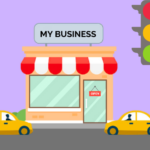Most businesses concentrate on innovation while failing to link their brand with client needs. Customer-centric businesses are 60% more profitable than non-customer-centric businesses. Being customer-focused allows you to better understand your customers and align products and services to generate excellent value. You can’t persuade them unless you know what they’re looking for. To create a solid client base, every firm should focus on identifying and addressing customer wants.
Once you have a solid grasp of the subject, you may use it to persuade your customers.
The understanding of consumer wants is important in every business. Knowing what your customers want allows you to improve practically every element of your business, particularly your marketing plan. In this article, we’ll talk about what consumer needs are and how to comprehend them.
What are Customer Needs?
Customer demands are described as the elements that influence people to purchase your product or service. To identify customer wants, it is necessary to first understand the reasons for their decisions.
It is important to know who your consumers are in order to better understand their needs. By defining your target audience and segmenting them based on their industry or other characteristics, you may not only determine your selling proposal but also their needs.
Here are four simple steps to follow in order to meet customer needs successfully.
Identify Customers | Follow customer needs analysis via surveys, interviews, feedback, focus groups, or social listening.
Distribute Customers | Once identified the needs, you can distribute them across the right teams and departments.
Create Content | Tailor product features, and create detailed content that speaks about customer needs.
Collect Feedback| Obtain customer feedback regularly to learn how your efforts meet their expectations.
Types of customer needs
There are two kinds of customer needs: physical and psychological. These requirements frequently overlap, making it difficult to differentiate them. Physical needs are the easiest to detect since they frequently have straightforward remedies. For example, if someone is hungry, they require food.
Psychological demands can be more difficult to define, but they are also the more potent driver of customer decisions. A bodily need, for example, notifies a consumer that they need to eat something, whereas a psychological need drives them towards food that gives them a specific emotion. Psychological demands may influence a customer to choose a salad over a burger in order to feel healthier.
Consider both the physical and psychological demands of your customers to better understand their requirements. Some examples of common customer requirements are:
Price | A product that fits into their budget
Experience | An enjoyable experience while using the product
Function | A product that solves a specific problem for the customer
Feeling | A specific feeling the customer can have while using your product
Compatibility | A product that works well with the other products your customer uses
Personal | A personal experience the customer has when interacting with a brand or contacting customer service
Social | A product that comes with social statuses, such as buying the latest model car to impress co-workers
How to understand your customers’ needs?
An in-depth insight into your clients’ needs necessitates analysis. Here are four measures you can take to better understand your clients’ demands and leverage that knowledge into actionable results:
1. Create a buyer’s persona
To comprehend your customers’ wants, you must first grasp who they are. Begin by creating a buyer persona, which is a fictional depiction of your ideal consumer based on research and your existing customer base. It identifies the type of person your company caters to, including their age, gender, geography, income, and hobbies.
You can consider the needs of that audience if you have a clear buyer persona. A target audience of women in their 50s, for example, may have different needs than men in their 20s. A buyer persona assists you in remembering your ideal customer when researching and outlining their wants later on.
2. Seek feedback from your customers
Getting direct input from your clients is one of the finest ways to understand their demands. You can ask customers what they like and hate about your products, as well as what they would want to see modified. There are various ways to accomplish this, including sending out surveys, hosting focus groups, and monitoring social media conversations.
Remember to ask a variety of questions while soliciting feedback from your customers. Learn more about their physical and psychological requirements. Inquire about how the product made them feel, as well as their physical encounter with the product.
As you collect input, synthesise the results and put the suggestions into action. You can then return to your clients to determine whether the changes enhanced their experience. This process of receiving input, implementing adjustments, and reassessing is critical not only for understanding client demands but also for making effective use of the information you receive.
3. Analyze your competitors
Your competitors also influence your customers’ requirements and desires. If one of your big competitors introduces a new service or feature, your target market will grow to expect it in all of their purchasing options. For example, if a software firm that sells a comparable product to yours gives a 30-day free trial, your audience may anticipate the same from you.
You can study your competitors in the same way that you collected feedback from your clients. Conduct focus groups in which you compare the two goods, conduct interviews with customers of the other company, and follow their social mentions. You can understand how your competitors are addressing the needs of your audience and how they could improve from this, which you can then use to better your offerings.
4. Craft a customer needs statement
With a customer needs statement, you are defining the exact needs of your audience and putting them into one succinct statement. Use the data you collected in the previous steps to inform the content of your customer needs statement.
To craft a useful customer needs statement, there are a few elements to aim for:
Consistency | Aim for a statement that will hold up throughout time. Because your buyer’s persona remains consistent throughout the product development phase, so should your statement. Maintaining a consistent needs description ensures that you may develop techniques for meeting those demands.
Usefulness to the consumer | Your needs statement should explain how your product will suit the needs of a customer better than a rival. Describe what you can do better than your competitors using the facts you learned about them.
Usefulness to your business | Make a needs statement that can be used by all departments in your organisation. This statement should inform your marketing team on the best approach to advertise a product, your product development team about what enhancements to make, and your sales team about how to effectively sell the product.
Clearness and conciseness | Everyone who reads this statement should understand exactly what your customers want. For the best outcomes, keep the language simple and correct.
5. Deliver quality customer support
Customers do not always seek “excellent product quality.” Customers choose brands that provide real-time assistance. As a result, your customer care teams should concentrate on creating a smooth service experience and improving client handoff.
66 per cent of customers say that the most crucial aspect of any online customer experience is to value their time. Faster resolution of client queries is a cornerstone of good customer service.
When customers get exactly what they need, their satisfaction level rises. It will undoubtedly be worthwhile if you concentrate on exceeding client expectations. You are capable of providing outstanding service to your customers.
How can you enhance your customer support quality?
Provide real-time support | You can connect with your customers with live chat to deliver real-time assistance for sales and support queries.
Use live assistance solutions | By using tools like co-browsing and video chat, you can provide faster solutions by reducing the number of touchpoints.
Automate your customer support | Use a chatbot template for information collection to engage with customers 24×7 and answer their simple queries promptly.
6. Develop a customer-centric culture
Creating a company culture centred on customer experience at every touchpoint is an excellent strategy to meet your customers’ needs.
The customer experience (CX) is a key differentiator for all businesses but developing a strong CX is not straightforward. It entails picturing interactions from the customer’s point of view: what are the expectations, what makes sense, and where do you have an opportunity to surprise and please someone?
And none of these events will occur at the same time.
What can be done to build a customer-centric culture?
- Align your company culture to prioritise the customer experience. Most customer interactions are made or broken by your staff, so be clear on your brand’s values and what makes the experience pleasurable.
- Empower your customer service professionals to be proactive, smart, and innovative in making it a reality.
7. Enhance the USP of your product
Every company requires a reason for their clients to choose them above their competitors, which is known as a Unique Selling Proposition (USP). Your USP may evolve in response to changes in your business and for different sorts of clients.
A good product is anything that may be supplied to a market for attention, acquisition, or consumption that meets the needs of the customer. Product quality is a factor that influences its capacity to meet inferred client needs. When clients are making purchasing decisions, the USP of your product can be used to effectively differentiate your brand.
The quality of the product speaks for itself. If your products are designed to assist clients to solve their problems quickly, you will attract and retain customers.
In order to maintain the smooth process, you need to follow certain tips |
- Conduct customer research on identifying customer needs and analysing them to serve them much better.
- Ask for customer feedback after and categorize it further to implement for improving the brand value to match customer needs.
Summing-up
When you start prioritizing customer needs, you need to identify them successfully in your products and services. When customers can relate your brand along with their needs, they are highly satisfied. Being able to deliver a great experience grows your customer base of loyal customers.
Having good knowledge of customer needs and wants not only helps to add constructive value but also levels up the overall brand recognition. It gives your business a competitive advantage and stays a step ahead in the market.
To stay ahead of your competition and to win your customers not just by delivering the best products and services but by addressing their needs you need to have a customer-centric approach to your business. Shergroup can help you in building a plan where you know what your customers need and want.
To find out how we can bridge the gap between you and your customers call us today.
Contact us on
You can reach us |
By Phone | 020 3588 4240
Website | www.shergroup.com and you can chat to us from here
Email | [email protected]
Facebook | Check out Shergroup on this channel and message us
Twitter | Check out ShergroupChat on this channel and message us
LINKEDIN | Check out Shergroup’s LINKEDIN – and please FOLLOW us!
Instagram | Check out ShergroupChatter and follow us!






